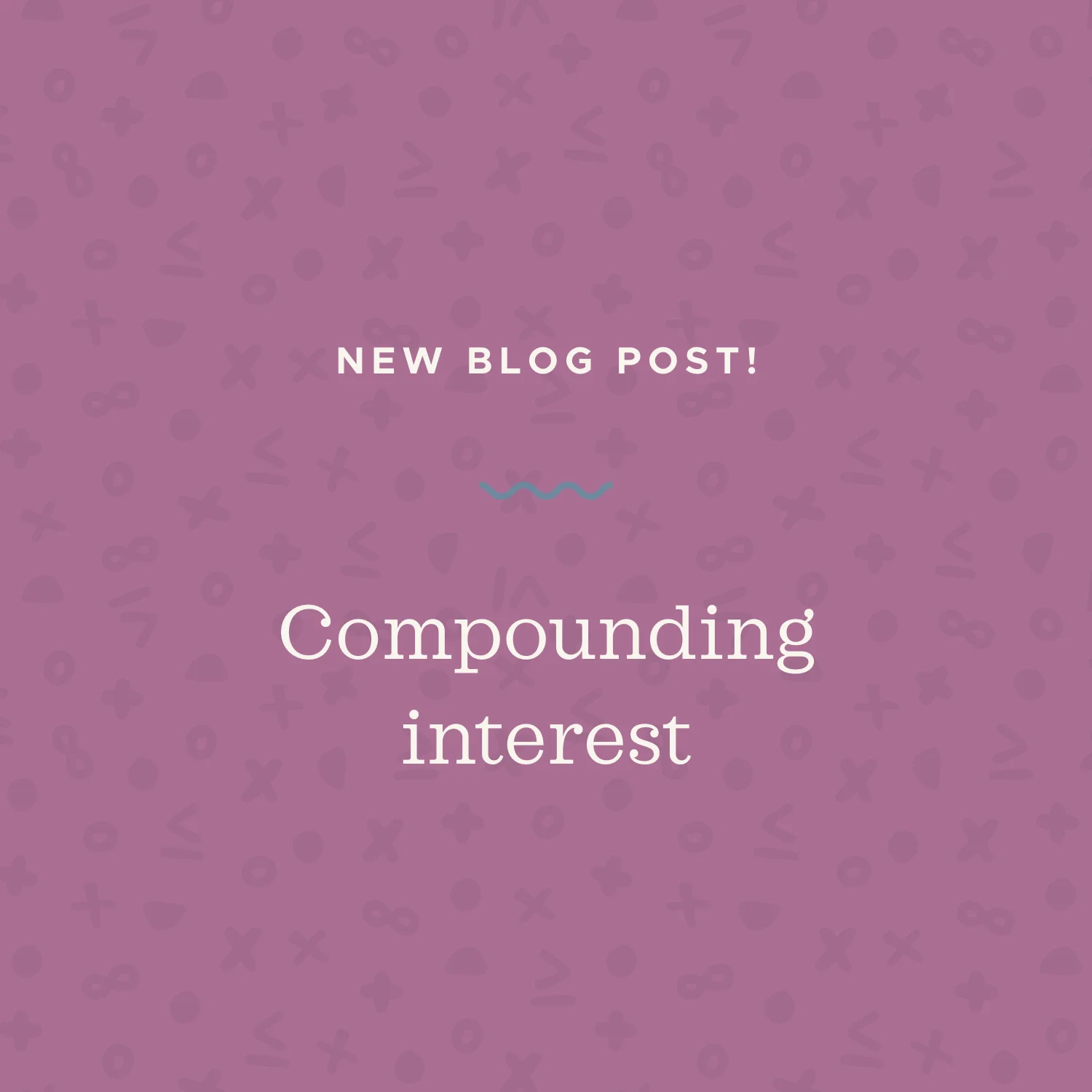Continuously compounding interest
Compound interest formulas
Compounding interest problems are a specific type of exponential growth problems and are commonly taught in calculus classes.
Using certain formulas, we can see how an initial sum of money increases exponentially when we continuously add, or compound, the interest it earns to the original principal amount, and then the interest earns interest over time.
Hi! I'm krista.
I create online courses to help you rock your math class. Read more.
The interest isn’t just applied at the end of the investment term, it’s applied constantly.
In an account like this one, the initial investment (the principle) will be constantly changing, because we’re constantly adding interest to it. Keep in mind that the formula only works based on the rate of interest remaining fixed for the entire investment term.
The general formula for calculating continuously compounded interest is
???A=Pe^{rt}???
where ???P??? is the initial investment, ???r??? is annual interest rate, and ???A??? is the amount in our account after time ???t???.
Calculating future value if interest is compounded continuously
Take the course
Want to learn more about Calculus 1? I have a step-by-step course for that. :)
How much will the investment be work after a certain number of years?
Example
Two thousand dollars is invested at a rate of ???3\%??? compounded continuously. How much will the investment be worth after ???3??? years?
First we need to identify the information we have. We know that our principle is ???P=\$2,000???, our rate of interest is ???r=0.03??? (this is the decimal equivalent of ???3\%???), and our time is ???t=3???.
Using ???A=Pe^{rt}??? we get
???A=2,000e^{0.03(3)}???
???A=2,000(1.09)???
???A=2,188???
Our investment would be worth ???\$2,188??? at the end of ???3??? years.
Let’s try a more complex example.
The interest isn’t just applied at the end of the investment term, it’s applied constantly.
Example
???\$6,000??? is invested at a rate of ???2\%??? compounded continuously for the first ???2??? years, then at a rate of ???3.5\%??? compounded continuously for the next ???2??? years and finally starting at the end of the fourth year at a rate of ???5\%??? compounded continuously.
Calculate the amount the investment would be worth after ???3??? years.
Calculate the amount the investment would be worth after ???6??? years.
We need to remember that our formula for calculating compound interest continuously is based on the fact that our rate of interest remains constant. Keeping this in mind, we’ll need to handle each interest rate separately.
We’ll use subscripts to denote whether the rate belongs to the first term, second term, or third term.
???r_1=0.02???
???r_2=0.035???
???r_3=0.05???
We know ???P_1=\$6,000??? but we don’t know ???P_2??? or ???P_3???. Let’s find those now since we’ll need them to answer both parts of this question.
???P_2??? will equal ???A_1???, the amount of money we have at the end of the first term (after ???2??? years).
So ???A_1=P_1e^{r_1t}??? where ???t=2???.
???A_1=6,000e^{0.02(2)}???
???A_1=6,245=P_2???
Next we remember that ???P_3??? will equal ???A_2???, the amount of money we have at the end of the second term (???2??? years after the end of the first term, ???4??? years since the beginning of the initial term).
So ???A_2=P_2e^{r_2t}??? where ???t=2???.
???A_2=6,245e^{0.035(2)}???
???A_2=6,698=P_3???
Armed with ???r_1???, ???r_2??? and ???r_3???, plus ???P_1???, ???P_2=A_1??? and ???P_3=A_2???, we can tackle both parts of this question.
In order to solve for the value of the investment after ???3??? years, we will use the data for the second term. But we have to remember that ???3??? years into the investment is ???1??? year into the second term, so ???t=1???, ???P_2=6,245??? and ???r_2=0.035???.
???A_{3\ \text{years}}=6,245e^{0.035(1)}???
???A_{3\ \text{years}}=6,467???
The investment would be worth ???\$6,467??? after ???3??? years.
In order to solve for the value of the investment after ???6??? years, we will use the data for the third term. But we have to remember that ???6??? years into the investment is ???2??? years into the third term so ???t=2???, ???P_3=6,698??? and ???r_3=0.05???.
???A_{6\ \text{years}}=6,698e^{0.05(2)}???
???A_{6\ \text{years}}=7,402???
The investment would be worth ???\$7,402??? after ???6??? years.






